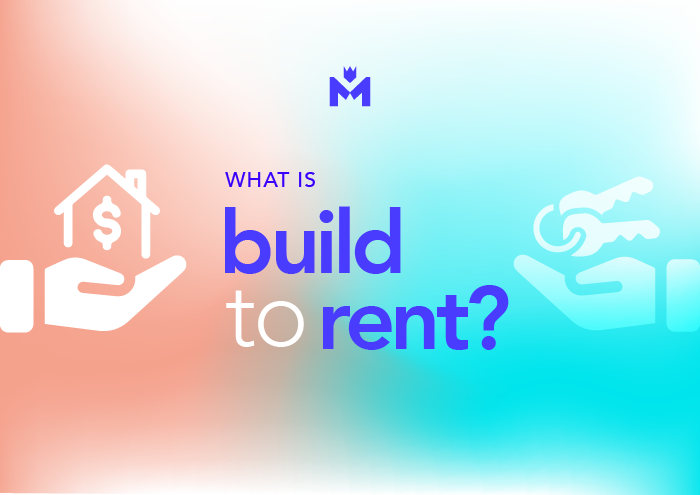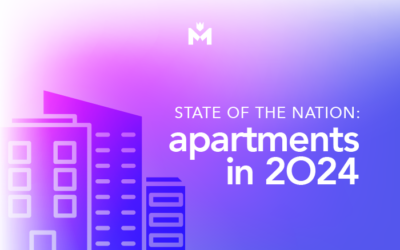A largely untapped market in New Zealand, build to rent focuses on creating stable and long-term rentals for people. It offers people a helping hand to save up for a house by negotiating price-capped rental agreements, to giving families stability and security.
What is build to rent?
Build-to-rent is a term for residential housing developments that have been built to provide long-term rental accommodation to tenants (source) and is an emerging submarket in many countries with ever-growing populations, like the United Kingdom or Australia. The most important feature is to create a longer tenure for the tenants, ensuring it remains tenanted 100% of the time. Build to rent complexes can range between townhouses, apartments, or entire subdivisions.
Build to rent (BTR) is sometimes referred to as multi-family housing, and is a type of urban housing development to help deal with the ever-increasing population growth in areas. These apartment or housing complexes are designed by an investor or developer who retains ownership, and also manages and maintains the complex itself.
In contrast to the popular and more traditional ‘build to own’ model, where a developer would build an apartment complex and sell the units off to individuals, who will live in them or rent out.
Why would build to rent be helpful?
This offers an opportunity to increase the supply of rental homes and rental developments in Aotearoa New Zealand, and aim to normalise long-term rentals. It would be a huge mindset shift for Kiwis who focus on purchasing and buying their own items to be comfortable with this type of complex.
In Europe, where they’re more popular, many build to rent properties have shared facilities, like gyms or shared community living spaces, and are close to amenities such as schools or transport hubs. Europe has a much bigger population to allow such things.
How does build to rent work?
A developer would own the apartment, complex, or facility, and it could be rented out for a long-term period (for example people could rent out the same spot for up to 20 or 30 years, even if it is a yearly rollover lease period). This would release the tenant from any maintenance or responsibility to the property, and the complex itself would be set up with the intention of long-term stays. It has to be carefully calculated to get the numbers right and ensure profitability for the development.
Traditionally, build to rent schemes would be backed by superannuation or KiwiSaver funds – however as other countries (such as Australia) who employed their superannuation schemes already have trillions of dollars allowing them to diversify their funds.
How is rent to own and build to rent different?
With rent to own you essentially rent out a dwelling for an extended period of time (for example, 20 years) at an above market rental rate in order to build up a deposit and buy the house. A trend here however is you don’t own the land itself, and just own the dwelling. Build to rent is, as we have stated above, is where a developer has built a complex with the intention it is a rental only facility.
How would build to rent work in New Zealand?
Purpose built rental accommodation might help solve the rising rent rates, with improved amenities to encourage renters to live there for longer. As we’re finding about 35%-40% of people in New Zealand are not homeowners, the constant changeover between selling of houses can create a struggle to find accommodation for long periods of time. Build to rent may provide a stable living environment for tenants as a solution.
What are the benefits of build-to-rent properties?
Easier leases
“Build-to-rent properties typically offer leases with features that are different to a traditional rental scenario.” (Source) Such flexible lease arrangements could be long-term with unique or different renewal conditions, no or low bonds, or even the ability to decorate and personalise a dwelling outside of the normal scope. A common bonus overseas is having pets without the need for pre-approval!
Same complex, different unit
A developer would likely have onsite management to help oversee tenancy arrangements, meaning tenants will have more flexibility to fit their requirements. This could include moving around the building if their situation changes with new children or sizing down when children move out. This can of course be done in traditional home rentals, as some rooms are built differently, swapping entire apartments or units can have some great added value for a tenant.
Stable & affordable rent
Widely considered a new solution for people seeking stability who can’t afford a deposit for a home, some of these projects will have a price cap on leases for an agreed upon time. This lack of movement on rent makes it easy for people sticking to a budget, or for people planning out next steps for their future.
What are the possible downsides to build-to-rent?
Folks still want to buy a home
We’re seeing heaps of commentary through the media of millennials and gen z’ers see buying a home as no longer a viable option for their future. From the rising house prices to somehow coming up with enough of a deposit without the help of intergenerational wealth. While long-term rental accommodation can offer stability, the aspirational dream of owning a home is still what people want!
No body corporate, no worries?
Traditionally in an apartment complex, there is a body corporate making decisions about the site such as improvements, painting, or dealing with raucous tenants. Usually the body corporate is made up of a series of investors or owner-occupiers, with a build to rent complex it is usually just one person who makes the final decisions.
Affordability in the rental space
While a tenant might be paying a price-capped amount per year, and the long-term rental set up will also provide a lot more stability, sometimes it means a tenant will be paying above-market rates. These rates will help keep any shared facilities and amenities within the complex going and pay for any additional maintenance. While the market in Australia and New Zealand are untested, this might of course not be the case, so it’s hard to make a call without looking at how this plays out.
We have recognised that buying a home is key to building wealth – which is why we created Development Empire. This platform, as part of The Empire Group, was created to help property buyers into suburbs that are seemingly unattainable. We look for locations that can cater for today’s busy lifestyle, have future growth, and are a welcoming combination of affordability and luxury.
If you’re unsure where to begin, reach out to one of our expert financial advisers at Money Empire, and let’s see what we can do to make your future happen.




